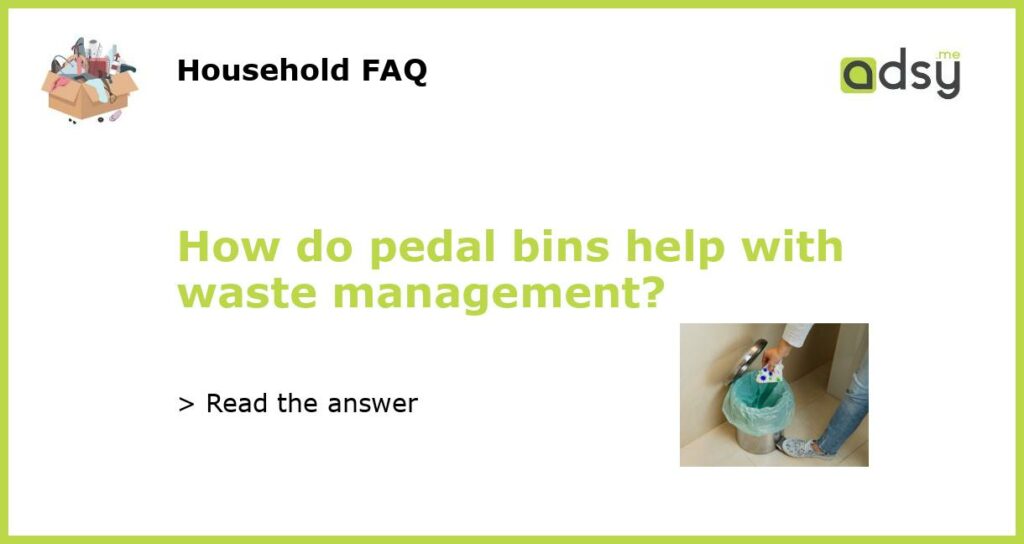What are Pedal Bins and How do They Work?
Pedal bins, also known as foot-operated bins or step bins, are waste containers that are designed with a foot pedal at the bottom. This pedal allows the user to open and close the lid of the bin without using their hands. When the pedal is pressed down, the lid opens, and when it is released, the lid closes. This mechanism helps in preventing the spread of germs and bacteria on the surface of the bin, promoting better waste management and hygiene.
Hygiene Benefits of Using Pedal Bins
One of the primary benefits of using pedal bins is the improvement in hygiene. Traditional bins require users to manually open and close the lid with their hands, which can be unhygienic, especially when dealing with waste materials. By eliminating the need for hand contact, pedal bins reduce the risk of cross-contamination and the spread of germs and bacteria.
This feature is particularly useful in environments where hand hygiene is crucial such as hospitals, clinics, childcare centers, and food preparation areas. By minimizing the risk of contamination, pedal bins contribute to creating a safer and healthier environment for both workers and visitors.
Waste Segregation and Recycling
Pedal bins can also play a significant role in waste segregation and recycling efforts. Many pedal bins come with multiple compartments or are designed to accommodate separate recycling bags. This allows users to easily sort and dispose of different types of waste such as plastics, paper, glass, and food waste, promoting recycling practices and reducing landfill waste.
In commercial settings, such as offices or public spaces, where waste management regulations often require segregation of recyclable and non-recyclable waste, pedal bins can be an effective solution to encourage waste separation. By providing clear labels or color-coded compartments, these bins make it easier for people to dispose of waste correctly, resulting in better recycling rates and reduced environmental impact.
Odor Control and Pest Prevention
Pedal bins are often designed with a tight-fitting lid that helps in containing unpleasant odors emanating from the waste. This is particularly important in kitchens and areas where food waste is disposed of. By keeping the lid closed, pedal bins prevent odors from spreading and attracting pests such as flies and rodents. This can help in maintaining a clean and hygienic environment, especially in places where waste is stored for extended periods.
In addition to the lid, some pedal bins also have built-in deodorizing features or carbon filters that further help in controlling odors. These features neutralize unpleasant smells, ensuring that the surrounding area remains fresh and pleasant.
Improved Convenience and Safety
The foot pedal feature of pedal bins offers improved convenience and safety compared to traditional bins. In environments where hands are often occupied or dirty, using a foot pedal to open the bin is much more practical. For example, in a busy kitchen, a worker can easily dispose of waste without having to touch the bin with their hands, minimizing the risk of cross-contamination.
Pedal bins also reduce the need for physical exertion or bending down to open and close the bin, making waste disposal easier for individuals with mobility issues such as the elderly or people with disabilities. The foot pedal mechanism is especially helpful in healthcare settings, avoiding unnecessary back strain for healthcare professionals who frequently dispose of waste throughout the day.
In conclusion, pedal bins offer various benefits in terms of waste management, hygiene, recycling, and overall convenience. Their foot pedal mechanism reduces the risk of cross-contamination, promotes waste segregation and recycling, controls unpleasant odors, and improves safety and convenience for users. Whether in households, workplaces, or public spaces, pedal bins are an effective solution for better waste management and environmental sustainability.






